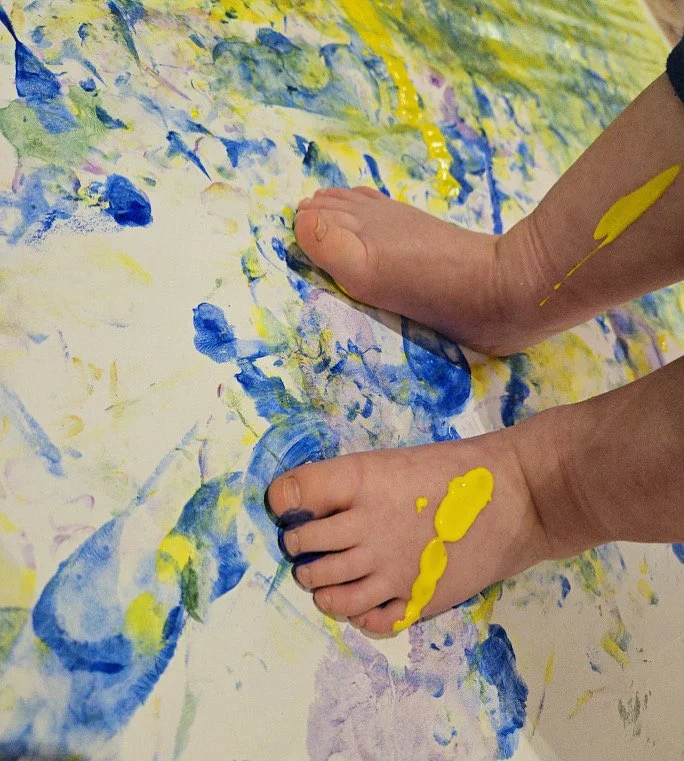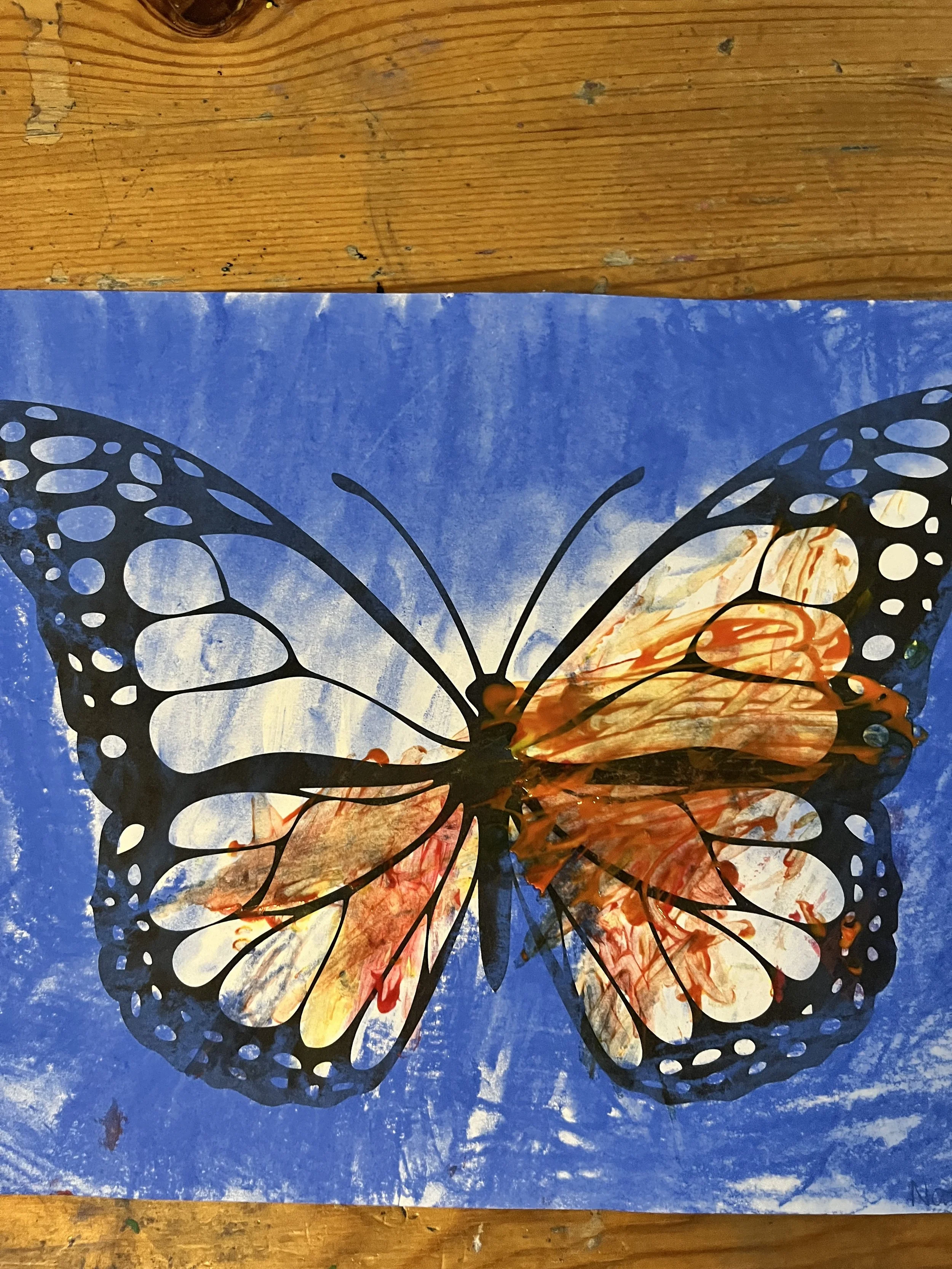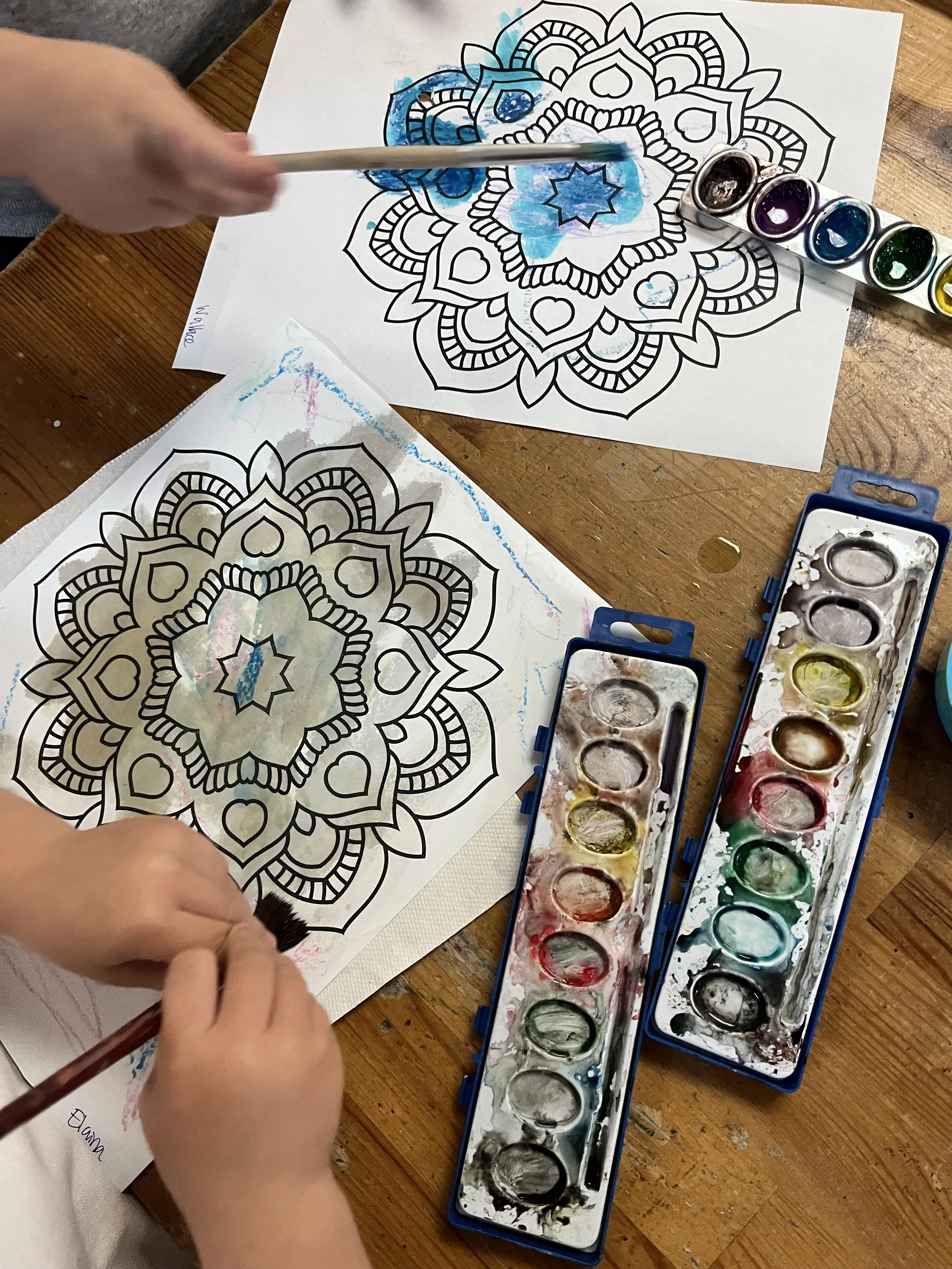6 Tips for Painting with Preschoolers
Painting with preschoolers can be a joyful and creative experience—but let’s be honest, it can also be messy and stressful! Whether you're a parent, teacher, or daycare provider, a few smart strategies can make a big difference. Here are six practical tips for painting with preschoolers.
If you prefer to watch the video, you can click on the linked video below. Be sure to subscribe to my YouTube painting channel!
6 Tips for Painting with Preschoolers
1. Choose Your Painting Supplies Carefully
The type of paint you choose matters. For children under the age of 7, always opt for non-toxic, washable paints like tempera. Brands such as Crayola clearly label their bottles with a non-toxic symbol, which makes shopping simple.
If you’re looking for something even more kid-friendly (and creative), try painting with pudding or natural dyes made from berries. You can also swap out traditional brushes for tools like sponges, stencils, and stamps. Avoid finger painting if you’re hoping to keep things neater.
2. Take It Outside
When possible, bring the painting session outdoors. It’s a game-changer. Kids have more space, and you’ll worry less about protecting your furniture or cleaning up spilled paint on your floors. A patch of grass or a shaded table outside makes a great painting spot with far less cleanup afterward.
3. Dress for Mess
Even washable paint can stain—so be prepared! Encourage kids to wear old clothes that can get messy, and layer a plastic or cloth apron over top. A smock or oversized T-shirt also works well. If you’re looking for recommendations, I’ve linked a video below with apron suggestions.
Having designated "art clothes" helps protect their regular wardrobe and keeps kids from feeling upset about ruined outfits.
4. Protect the Surface
If you’re painting indoors, take a moment to cover your painting area. A reusable tablecloth from a dollar store is a great option—look for ones with a wipeable surface and a fabric backing. These tablecloths can be easily cleaned with a damp sponge or disinfecting wipe.
Don’t forget to think beyond the table: you may want to protect the floor or any surrounding furniture as well. Paint spills happen (so do tipped water containers), so a little prep goes a long way.
5. Explain What Happens After Painting
Before you start, walk kids through the cleanup routine. This is especially important if you're working with a group. Let them know what to do with their artwork when it’s finished. Do they place it on a drying rack? Leave it on the table?
Also explain how they'll clean up—do they go to the sink or will you bring soapy water? Make sure they understand how to wash their hands and what to do with dirty aprons or brushes.
When kids know what to expect, transitions are smoother, and you won’t have a dozen children asking you what to do at the same time.
6. Get Kids Involved in Cleanup
Involve kids in the cleanup process—they’re capable and it teaches them responsibility! Set up a small bucket of soapy water for washing hands and brushes. Hand out wet sponges to wipe down tables and show them where to hang or rinse their aprons.
Letting kids help with tidying up not only builds independence but also lightens your load. Young kids also enjoy feeling helpful and practicing independent life skills.
Conclusion:
Painting with preschoolers doesn’t have to be chaotic. With a little preparation, the right supplies, and clear expectations, you can create a fun and positive art experience for everyone involved.
If you found these tips helpful, leave a comment and let me know which one you’ll try first! Be sure to subscribe for more kid-friendly art ideas and lessons. Click on the button below!



